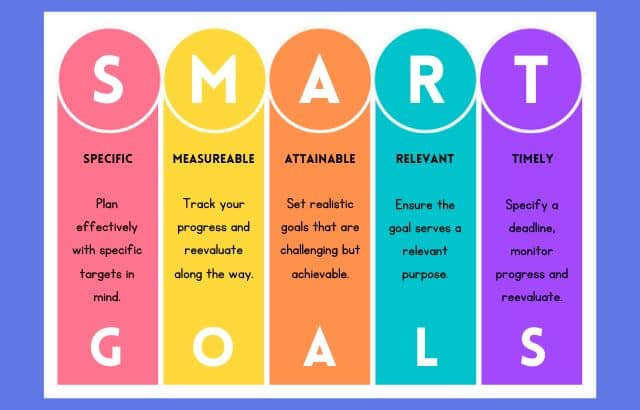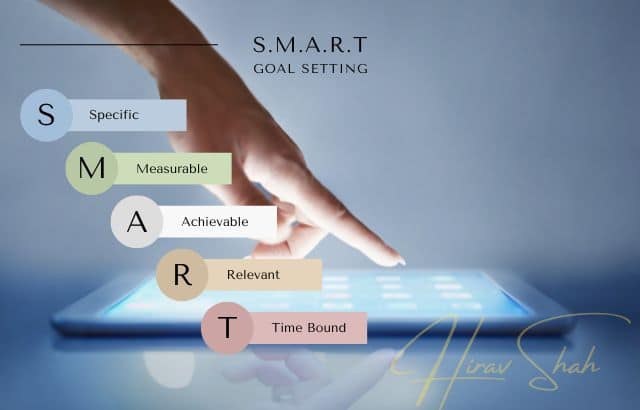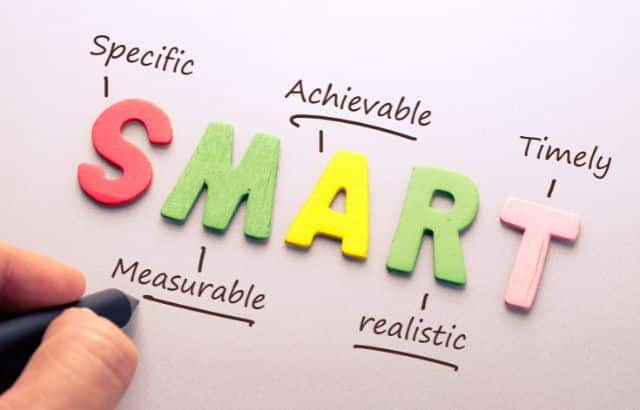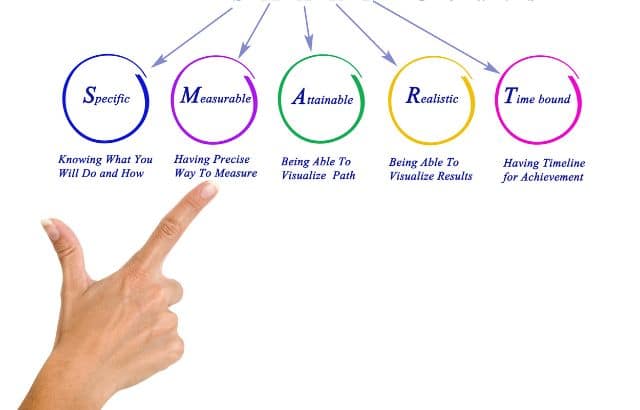In the pursuit of success, goal-setting is a cornerstone, and one highly effective technique that stands out is SMART Goals. As advocated by Hirav Shah, a distinguished success strategist and entrepreneur, SMART Goals offer a structured approach to setting and achieving objectives. In this in-depth exploration, we will delve into why SMART Goals are the optimal path to success, exploring the principles, importance, and strategies endorsed by Hirav Shah.
Table of Contents
WHY THIS GOAL-SETTING TECHNIQUE IS THE BEST WAY TO ACHIEVE SUCCESS
Setting clear and measurable goals is a fundamental step toward realizing one’s aspirations. SMART Goals, a methodology popularized by Hirav Shah, take this concept a step further by providing a systematic framework that enhances goal clarity, feasibility, and achievement.
WHAT ARE THE 5 SMART GOALS?
-
- Specific: Clearly define what you want to accomplish, avoiding vague or ambiguous language.
- Measurable: Establish concrete criteria to track your progress and determine when the goal is achieved.
- Achievable: Set goals that are challenging yet realistic, aligning with your capabilities and resources.
- Relevant: Ensure that the goal is meaningful and aligns with your overall objectives and aspirations.
- Time-bound: Set a specific timeframe for achieving the goal, adding urgency and a sense of accountability.
WHY ARE SMART GOALS IMPORTANT?
-
- Clarity and Focus: SMART Goals provide a crystal-clear vision of what needs to be accomplished, fostering focused efforts.
- Motivation: The specificity and measurability of SMART Goals contribute to increased motivation, as progress becomes tangible and achievable.
- Efficiency: By establishing achievable and relevant goals, individuals can channel their efforts more efficiently toward desired outcomes.
- Accountability: The time-bound nature of SMART Goals creates a sense of urgency and accountability, preventing procrastination.
HOW TO ACHIEVE SMART GOALS
-
- Break Down Goals: Divide larger goals into smaller, more manageable tasks to maintain momentum and celebrate incremental achievements.
- Regular Review: Continuously reassess and adjust SMART Goals as circumstances change, ensuring ongoing relevance and alignment with larger objectives.
- Seek Support: Collaborate with mentors, coaches, or accountability partners to gain valuable insights and support throughout the goal achievement process.
COMMON SMART GOAL MISTAKES
-
- Vagueness: Failing to clearly define goals can lead to confusion and a lack of direction.
- Unrealistic Expectations: Setting goals that are too ambitious may result in frustration and demotivation.
- Lack of Flexibility: Refusing to adapt goals in response to changing circumstances can hinder progress.
Quick SMART GOALS EXAMPLES
-
- Specific: Instead of “lose weight,” specify “lose 10 pounds in three months.”
- Measurable: Rather than “increase sales,” state “increase monthly sales by 15%.”
- Achievable: Instead of “write a book in a week,” set the goal to “complete the first chapter within a week.”
- Relevant: Instead of “learn a new language,” consider “learn Spanish to enhance communication with international clients.”
- Time-bound: Rather than “start a blog someday,” commit to “launching a blog within the next month.”
Let’s go into more details with SMART Goal examples.
Below are SMART goal examples for health, food, and mindset, each incorporating the specific, measurable, achievable, relevant, and time-bound criteria:
Example 1 Health:
- Specific: Achieve a healthy weight by losing 10 pounds.
- Measurable: Track weight loss progress weekly.
- Achievable: Aim for a weight loss of 1-2 pounds per week.
- Relevant: Enhance overall well-being and reduce the risk of health issues.
- Time-bound: Achieve the goal within 10 weeks.
Example 2 Food:
Specific: Adopt a balanced diet by consuming five servings of vegetables and fruits daily.
- Measurable: Keep a food journal to track daily intake.
- Achievable: Gradually increase servings, starting with three and progressing to five.
- Relevant: Support overall health through nutrition.
- Time-bound: Consistently consume five servings daily within the next four weeks.
Example 3 Mindset:
- Specific: Cultivate a positive mindset by practicing daily gratitude journaling.
- Measurable: Record three things for which you’re grateful each day.
- Achievable: Dedicate 5 minutes each evening to journaling.
- Relevant: Foster a positive outlook on life and improve mental well-being.
- Time-bound: Continue the daily practice for the next 30 days.
These SMART goal examples provide a clear and structured approach, making them more achievable and effective in driving positive change in health, food choices, and mindset.
Conclusion:
Hirav Shah’s endorsement of SMART Goals as the optimal way to achieve success underscores the transformative potential of this goal-setting technique. By incorporating specificity, measurability, achievability, relevance, and time-bound elements, individuals can propel themselves toward their aspirations with focus, motivation, and increased efficiency. The principles of SMART Goals, as championed by Hirav Shah, serve as a blueprint for turning dreams into tangible accomplishments, making success a strategic and achievable reality.






























